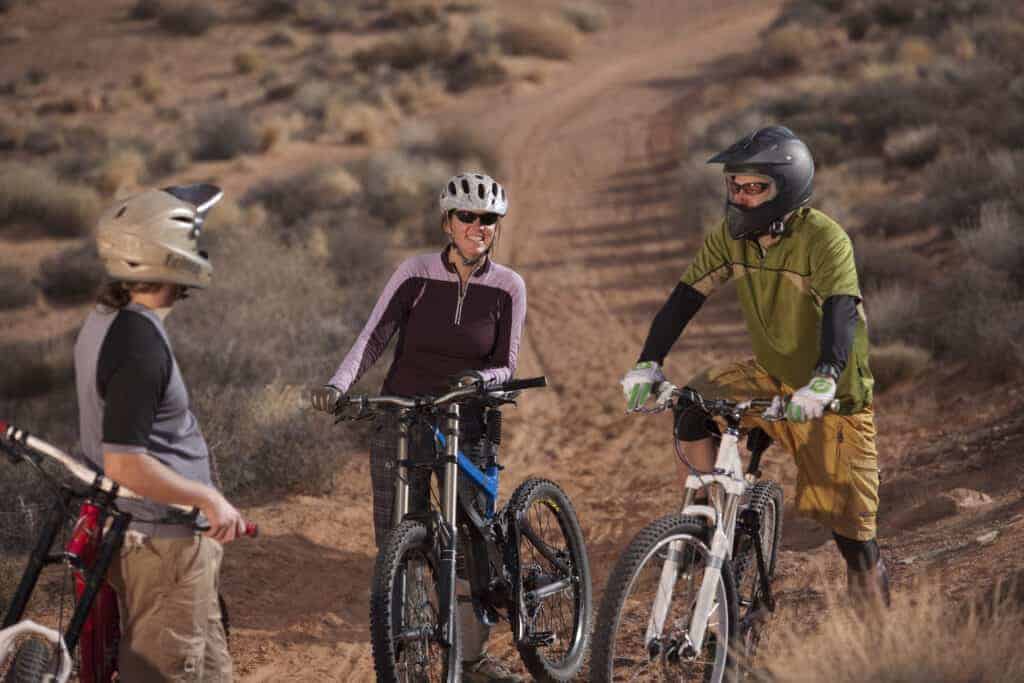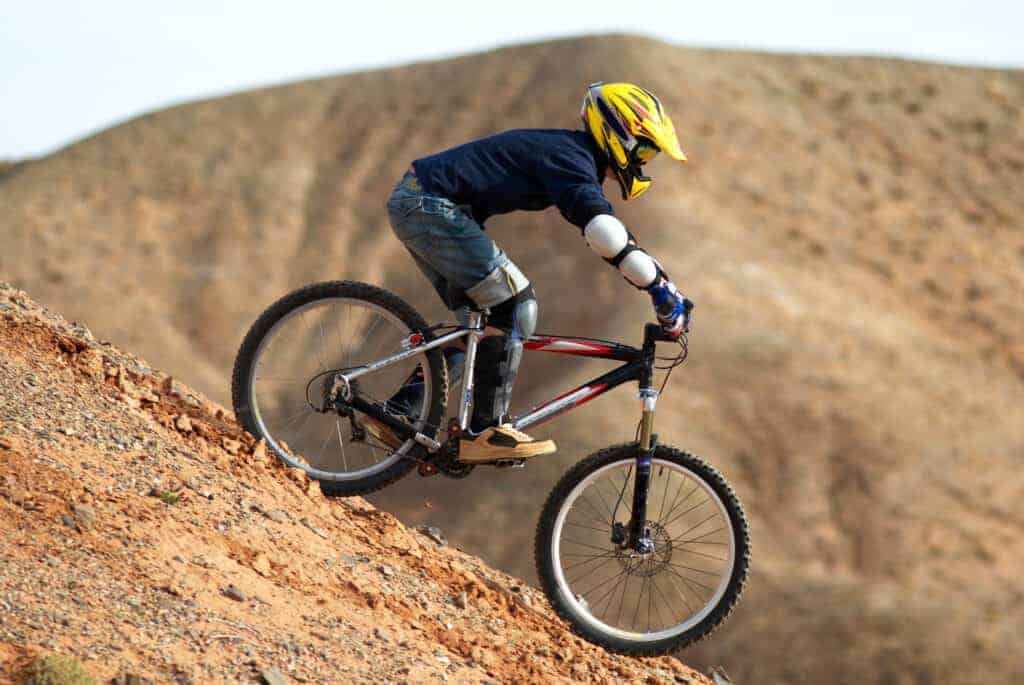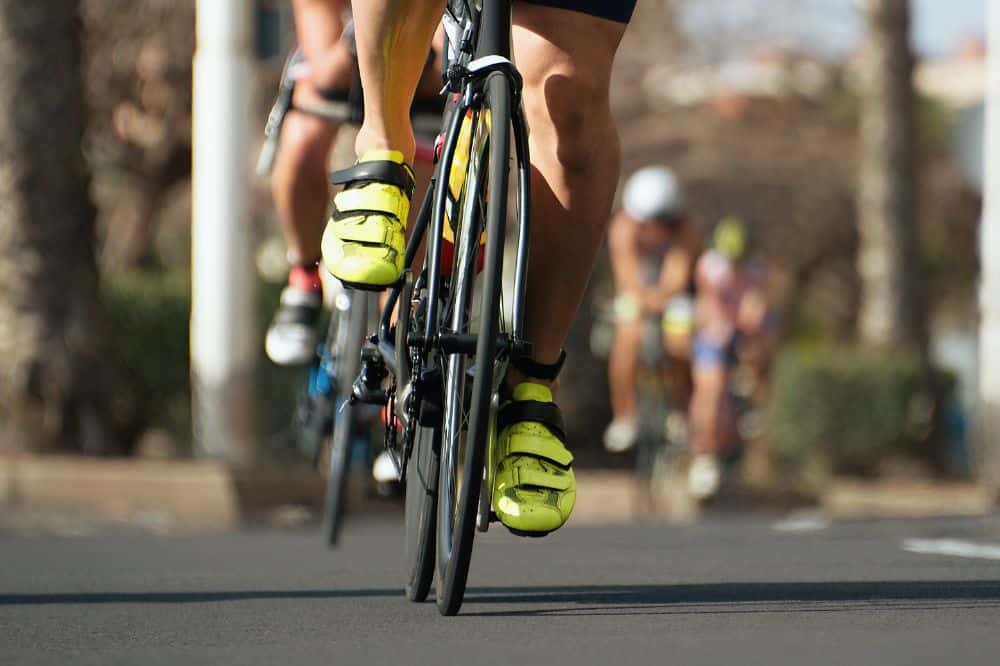What type of bike rider are you? Did you know that some helmets are uniquely designed for a reason? While trail riders are generally slow-paced yet covering all sorts of tracks, downhill racing involves speed. Both riders require ample head protection, therefore, the choice of an appropriate helmet is crucial.
Generally, trail riding helmets prioritize your comfort while downhill racing helmets prioritize your safety. In this article, we will look at the helmet features you should consider in both cases and discuss more on how they achieve their distinct roles. So let’s get started.
Downhill Racing Helmets
As a downhill racer, you are looking for a helmet that offers protection against extreme terrain at high speeds. The following features identify best with these demands:
Aero Design
These helmets have an angular design that looks more streamlined when compared to the round types. Since downhill racing involves speed, the last thing you need is a helmet that keeps blocking the natural flow of wind. Such dynamic shapes reduce wind resistance and therefore have minimal impact on your overall speed.
Full Coverage
Downhill helmets offer full-face coverage including protecting your chin and jaw. This way, your entire head, and face are well protected in case of a collision. They also come with robust chin bars and face shields to enhance your protection, especially, against face injuries as you descend at high speeds.
Advanced Technology
These helmets also feature high-end technology such as MIP (Multi-Impact Protection) and MIPS (Multi-directional Impact Protection System). Such tech ensures your helmet doesn’t contribute to more head damage in case of an accident. MIP, for example, helps re-distribute the collision forces, while MIPS ensures the helmet doesn’t rotate while on your head to avoid severe brain injury.
Better Retention Systems
A sad scenario would be your helmet snapping off your head and flying in the air in case of an accident. And since you will mostly be riding at high speed, these helmets offer better closures (D-rings) and adjustable buckles. That way, you can always ensure a tight yet comfortable fit even while on the move.
Noise Management
It’s natural to encounter noise from the wind blowing as you ride downhill, right? Now helmets designed for downhill rides tend to solve this problem by having fewer vents on the shell. Some will, however, have strategically placed inner ventilation channels. Either way, with so much wind blowing your way, a ventilated helmet is the least of your worries.
The noise is also drastically reduced by their aerodynamic shape. These angular helmets offer the least resistance to wind hence your ears will be at peace helping you pay more attention to the track.

Trail Riding Helmets
Contrary to the downhill racer, trail riders need a helmet that doesn’t weigh them down in terms of comfort and ventilation. So what key features should you consider?
The Helmet Weight
With the ever-advancing technology, it is now possible to rock a super light yet extremely protective bike helmet. Since you might stretch over very long distances, a lighter helmet is the most appropriate for you as a trail rider. Such helmets also put less strain on your neck enhancing natural wind ventilation. A lighter helmet also helps to reduce fatigue, especially during longer rides.
Ventilation
Now that we mentioned natural wind ventilation, ensure that you select a helmet with multiple air vents on the shell. Since trail riding demands more physical input, you need as much cooling as possible especially on a hot day. These vents facilitate cooling.
Some helmets also offer additional cooling channels on the inside. These help prevent heat build-up which in turn enhances your comfort and consequently your performance.
Better Padding
Most trail-riding helmets utilize multi-impact foam such as EPS (Expanded Polystyrene) to offer better protection by enhancing impact absorption and distribution. And since collisions in trail rides are rather forgiving, such padding can absorb multiple forces without needing a replacement hence serving you for longer.
Foam padding also offers better moisture-wicking ability. By keeping you dry throughout your ride, you experience enhanced ventilation and overall cooling even in extreme heat. Besides, it would be really uncomfortable riding for hours with your face uncontrollably dripping with sweat, right?
Eye Protection
Most trail ride helmets offer visors that are either adjustable or removable to protect your eyes against extreme light such as the sun glare as well as protection against debris along these trails. They are removable. You might not necessarily need eye protection on a cool morning ride along smooth pavements, right? Then with an adjustable helmet, you have an option of raising the visor higher or lowering it in response to the sun’s direction.
Trail vs. Downhill Helmets Cost Comparison
While helmet prices tend to vary based on reasons such as the brand, construction, and materials used, downhill racing helmets tend to be costlier than trail-riding helmets. Based on the discussion above, we can all agree thathelmets incorporate more advanced design and technology. They also require more material to achieve full face coverage and enhanced impact resistance.
Downhill racing helmets might also have extra features such as face shields and chin bars as well as better retention systems.
On the contrary, trail-riding helmets are more lightweight and prioritize more on comfort and extended coverage instead of full-face protection. These fewer requirements help to lower their cost of production. Even so, always go for a helmet that offers good protection. Also, remember that price alone cannot dictate the value of a mountain bike helmet.
The Bottom Line
Helmets designed for trail riding have extra back coverage in case you fall backward. They also have a well-defined visor to shield your eyes from debris. They are also lighter and more ventilated for added comfort.
On the other hand, helmets designed for downhill racing provide maximum protection against impact since these riders tend to push themselves beyond limits. These helmets also have fewer vents to minimize wind noise. And they are designed aerodynamically to reduce wind resistance. Once you understand these key concepts, choosing an appropriate helmet for your rides will be much easier.














This caught my attention because I have been on bike trails and wore a regular bike helmet. But your title had me interested in the helmet debate of trail vs downhill. Was I wearing the right helmet? I didn’t know. I never even thought about really the helmet structure for biking. I always thought bike helmets all looked the same. I didn’t realize that downhill biking used different helmets. I thought downhill bikers just used motorcycle helmets. It totally makes sense that they are designed differently. I mean downhill biking with a regular helmet your face would be smooshed if you didn’t have that face cover, it all makes so much more sense now. This was very interesting and fun to read thanks!
Hi, Lifestyle with Christina Spohr, and thank you.
Thank you for your kind words.
Yes, it is more safety when you go downhill with a full-face helmet. As this article is relevant to your discussion, I thought you would like to read it. It is about full-face helmets for women.
Great to hear about the benefit of the article too.
Don’t hesitate to contact me to help you with anything else or if you have any questions.
I’ve been getting into biking recently, and your article on the differences between trail riding helmets and downhill racing helmets caught my attention. I’ve mostly been using a basic helmet, so I’m curious about the advanced features you mentioned for these specific types of helmets.
You mentioned that downhill racing helmets prioritize safety with features like full-face coverage and advanced technology like MIPS. As a beginner, could you elaborate a bit more on how MIPS technology works and how it enhances the safety of the helmet?
Additionally, since these helmets seem to serve very distinct purposes, can they be used interchangeably? For instance, could a trail rider use a downhill racing helmet for added protection, or would it impact their comfort and performance negatively?
Hi, Skamalka, and thank you.
Thank you for your kind words.
MIPS is a technology designed to enhance the safety of bike helmets. It was developed to address the rotational forces that can occur during specific impacts, which traditional helmets may not effectively mitigate. MIPS is now widely used in many high-quality bike helmets.
The basic idea behind MIPS is to create a low-friction layer inside the helmet that allows the head to move slightly relative to the helmet’s shell upon impact. This movement mimics the brain’s protective mechanism: slide and rotate slightly inside the skull to reduce the rotational forces experienced during a crash.
Here’s how MIPS technology works:
Low-Friction Layer: Inside the helmet is an additional layer made of a low-friction material (usually a plastic liner). This layer is attached to the helmet’s foam liner with flexible anchors, allowing it to move independently from the outer shell.Rotational Movement: In the event of an impact at an angle, the low-friction layer permits a small rotational movement. As the head experiences a rotational force, the MIPS liner allows the helmet to rotate slightly around the head, reducing the strain on the brain.Impact Energy Absorption: Like traditional bike helmets, the primary function of the MIPS helmet is still to absorb and dissipate the direct impact energy through the foam liner, protecting the head from linear forces.
By allowing the helmet to manage both linear and rotational forces, MIPS technology aims to provide better protection against certain types of impacts, particularly those involving oblique angles. These are common in real-world biking accidents where the head may hit the ground or other surfaces at an angle, resulting in rotational forces.
It’s important to note that while MIPS technology can enhance helmet safety, no helmet can completely prevent all head injuries. However, MIPS is considered an improvement over standard helmets for addressing rotational forces associated with certain types of brain injuries.
Trail riders can use a downhill racing helmet, and some do. It is more a question of personal decisions each takes, with comfortable and safety in mind.
If you like, here is a good post about what you need to have in mind when you are thinking about getting a bike helmet, a good guide, we can say.
Great to hear about the benefit of the article too.
Don’t hesitate to contact me to help you with anything else or if you have any questions.